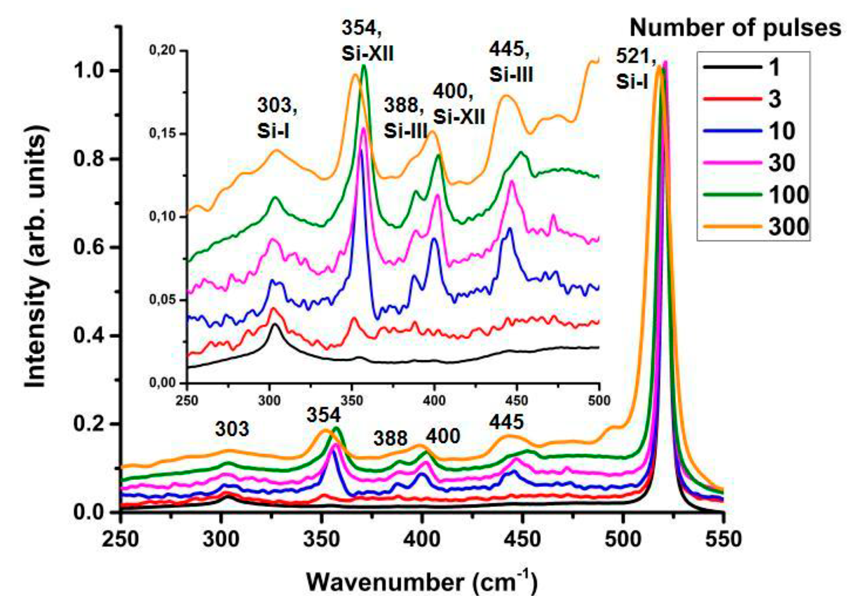Applied Surface Science Volume 416, September 2017, Pages 988-995
A.A. Ionina, S.I. Kudryashova, A.O. Levchenko, L.V. Nguyen, I.N. Saraev, A.A. Rudenko, E.I. Ageev, D.V. Potorochin, V.P. Veiko, E.V. Borisov, D.V. Pankin, D.A. Kirilenko, P.N. Brunkov
Correlated topographic and structural modification on Si surface during multi-shot femtosecond laser exposures: Si nanopolymorphs as potential local structural nanomarkers
Applied Surface Science Volume 416, September 2017, Pages 988-995
DOI: 10.1016/j.apsusc.2017.04.215
High-pressure Si-XII and Si-III nanocrystalline polymorphs, as well as amorphous Si phase, appear consequently during multi-shot femtosecond-laser exposure of crystalline Si wafer surface above its spallation threshold along with permanently developing quasi-regular surface texture (ripples, microcones), residual hydrostatic stresses and subsurface damage, which are characterized by scanning and transmission electron microscopy, as well as by Raman micro-spectroscopy. The consequent yields of these structural Si phases indicate not only their spatially different appearance, but also potentially enable to track nanoscale, transient laser-induced high-pressure, high-temperature physical processes - local variation of ablation mechanism and rate, pressurization/pressure release, melting/resolidification, amorphization, annealing - versus cumulative laser exposure and the related development of the surface topography.

 Русский (РФ)
Русский (РФ)  English (UK)
English (UK) 